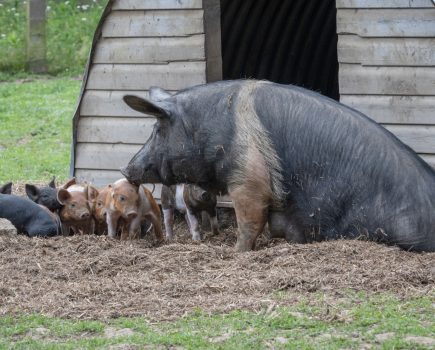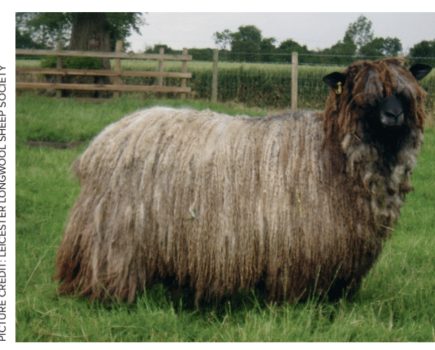The house cow is the hub of a smallholding. And the Jersey is the ideal house cow. So says Smallholder of the Year Jane Fanner. She talked to Marie-Claire Kidd
Smallholder of the Year and narrowboat dweller Jane Fanner isn’t looking for more customers. On a sunny Sunday she already struggles to find space in her tiny tearoom on the banks of the South Oxford Canal.What she does want is to shout from the rooftops about her love affair with her extraordinary Jersey cow, Wendy, who has not only helped Jane cope with bereavement, but also played an important part in turning an unloved British Waterways dump into a productive and profitable enterprise.Jane regards the house cow as the hub of a smallholding, and the Jersey as the perfect house cow. She is only too aware that she is one of the few smallholders who actually makes money. That, she says, is largely down to Wendy.Over five years into her lactation, Wendy still produces two gallons during each daily milking. It is enough for Jane, her husband and son and the tea shop, which sells drinks, cakes and cream teas every Sunday.“I’m just so in love with Wendy,†she says. “John Seymour waxes lyrical about Jersey cows. He says they’re docile if not downright friendly, and that’s exactly what she’s like. She’s a dream cow. I’m convinced that she’s so loving that it’s keeping the hormones going.â€Wendy is an older Jersey cow bought six years ago at auction. “I liked her face,†remembers Jane. “When stockmen look at cows, they look at their feet, their udders, their gait. When I buy a cow, I look at its face, and if it’s got a nice countenance, a nice expression, then I’ll buy it.“I asked the farmer ‘what’s she like as a person?’, and he knew what I meant. He said ‘she’s my favourite cow’. He could have said that to everybody, I don’t know, but I’m inclined to think he didn’t.â€Wendy’s low price betrayed her status as a cull cow. No longer viable for the farmer, and destined for slaughter, like many cull cows Wendy was in calf when she was put up for sale. Jane bought her in the autumn, and the following spring Wendy gave birth to Bella, named after the autumn crocus, belladonna.‘“When she had Bella she produced a lovely the Jersey calf, oddly with no tail,†says Jane. “I was very pleased that we managed to give this cow another chance.â€
Bring it to lifeWith the help of artificial insemination, Bella went on to produce two young of her own. Wendy witnessed the birth and lent her support. “I wanted her mother to be there. I knew Wendy would know exactly what to do. I knew she would lick it and bring it to life.â€The Fanners recently bought a bull, ‘Pancake’, at auction. Purchased on Shrove Tuesday as a calf, he was transported in the back of their Morris Van, which had been scrubbed out and filled with a deep bed of straw.â€He was a sweet little bull. He was nursed by Wendy. When she sees calves she instantly loves them and starts feeding them. That’s the sort of character she is. She has such generosity of spirit. Wendy, amazingly, has given milk ever since she had Bella.â€Last year Jane bought two Hereford crosses, and the amount of milk Wendy produced suddenly doubled. ‘She’s just such a kind cow, it’s as simple as that,’ says Jane. “She’s just a lovely, generous personality. Having just lost my own mother, she sort of filled the void.â€Although Jersey milk is challenging for cheese makers, Jane produces a hard, cheddar-type cheese during the cooler months, for home use. She makes butter all year round, which she uses at home and in the tea shop, often using the leftovers to make bird cakes for the feeders outside her bedroom window. “Everybody benefits,†says Jane, “including the darn squirrels.â€Jane is convinced that, for smallholders, a cull cow is a worthy investment. “I’d like to see more people taking older Jersey cows which don’t have a commercial value but which have an enormous value for the smallholder,†she says. “Keeping a house cow isn’t that complicated once you get used to it.“Wendy comes to the call. She knows her name and she comes belting up. She’s a delight to milk. I always feed my cows when I milk them.’“Most dairy farmers are under tremendous pressure to produce more,†she adds. “Their farms are run by accountants. Breeding improvement programmes take the most productive cows and keep breeding from them.“They can produce 60 litres a day. They’re carrying almost a dustbin full of milk in their udders. It leads to back, hip and foot problems. A lot are culled because they can’t walk.“We don’t do anything to Wendy. She naturally produces more milk in spring and summer. We leave our calves with their mothers. If we want milk, I put the cow and calf together in the barn overnight, separated by a fence, so that they can see and touch each other and, in the morning I milk her, but I always leave enough for the calf. That way we get a happy calf and a happy cow.“One of the best things for animal welfare is to understand happiness psychology. They say ‘keep them well’, but they don’t talk about the psychology side of things. I think it’s very, very important.â€







